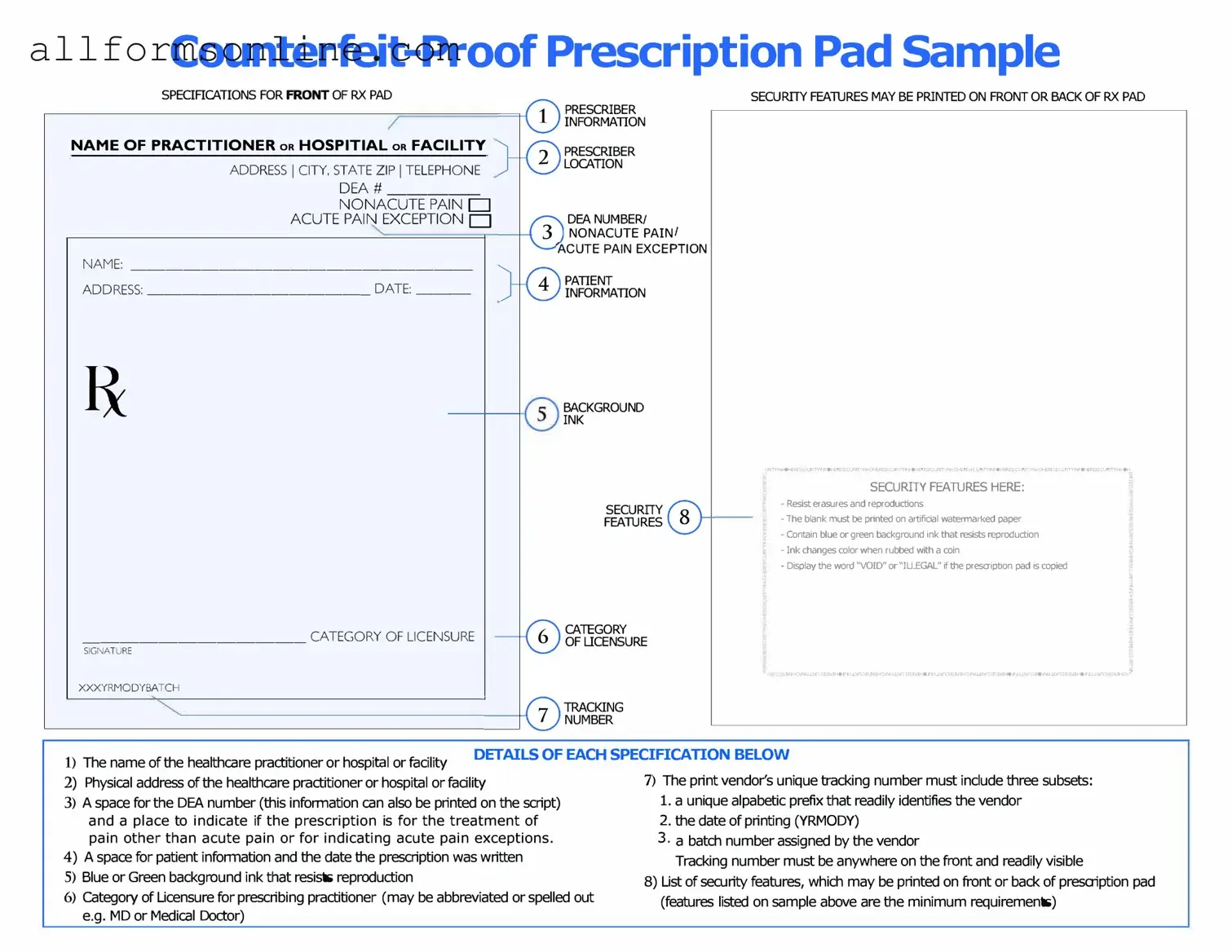What is the Prescription Pad form?
The Prescription Pad form is a standardized document used by healthcare providers to prescribe medications to patients. It ensures that prescriptions are clear, legible, and contain all necessary information to avoid any confusion during the dispensing process.
Who can use the Prescription Pad form?
This form is primarily intended for licensed healthcare professionals, including physicians, nurse practitioners, and physician assistants. These providers must have the authority to prescribe medications in their respective states.
What information is required on the Prescription Pad form?
Key details include the patient's name, date of birth, medication name, dosage, frequency, and duration of the prescription. Additionally, the prescribing provider's name, contact information, and signature are essential for validation.
How should the Prescription Pad form be filled out?
It is important to write clearly and legibly. Use standardized abbreviations and ensure that all required fields are completed. Avoid any unclear instructions that could lead to misinterpretation by the pharmacist or patient.
Is there a specific format for the Prescription Pad form?
While the format may vary by state or healthcare institution, most Prescription Pad forms follow a similar structure. They typically include sections for patient information, medication details, and provider information, ensuring that all necessary components are covered.
Can a Prescription Pad form be used for controlled substances?
Yes, the Prescription Pad form can be used for controlled substances; however, it must comply with specific regulations set by the Drug Enforcement Administration (DEA). Providers must ensure they are following state and federal guidelines when prescribing these medications.
What should be done if a Prescription Pad form is lost or stolen?
If a Prescription Pad form is lost or stolen, it is crucial to report it to the appropriate authorities immediately. Providers should also notify their practice management or compliance department to take necessary precautions and prevent potential misuse.
